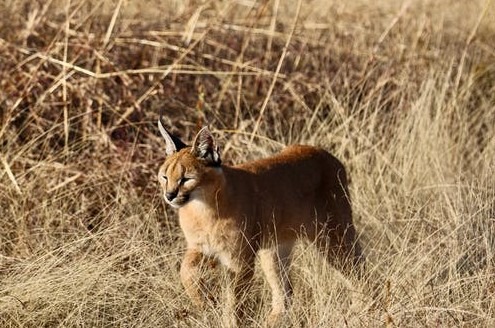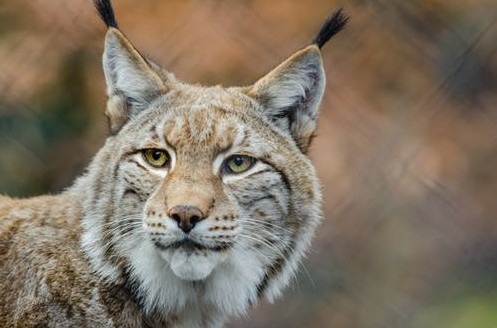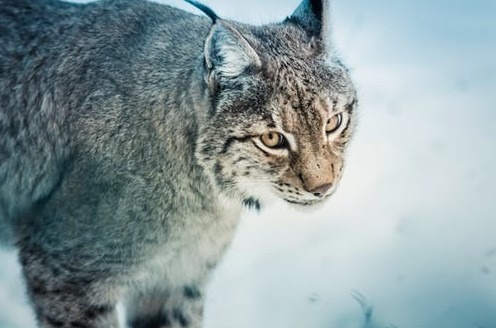Exotic pets can make quite an impression on your social circle. They’re also interesting creatures that might become a valued family member. However, many of us would also like to stay on the safe side when considering any exotic breed for a pet. Exotic cat breeds are very popular these days, so take a look at some of the top choices that might make great pets:
1. Servals
The native habitat of servals is sub-Saharan Africa. It eats mostly rodents and can weigh up to 40 pounds. They’re quite a popular choice with exotic cat enthusiasts in the United States, but the owner has to be experienced in keeping such pets.
The serval can become large enough to be mistaken for a cheetah. If it escapes from its owners, the media will usually utilize the term ‘cheetah’ in order to avoid any confusion. The spotted pattern and long legs make it very similar to the large cat, though the serval has pointed ears like a fox and is quite a bit shorter than your average cheetah.
While you don’t want a serval biting you, this breed isn’t a danger to humans. It’s more likely to prey on rodents, birds, and very small antelopes. If it feels threatened, though, the serval won’t hesitate to bite.
Those who own servants will tell you that they’re mostly quiet, aloof, and might even tolerate other pets if they’re raised in the same home. They don’t climb very well, so you can keep them in a confined space quite easily. If you do this, though, remember that they also need proper exercise in order to avoid unhealthy weight gain.
2. Bobcat
The bobcat is native to the area between southern Canada and central Mexico. They live on birds, fish, and rodents. If necessary, they can also attack and feed upon goats and sheep.
This breed has a stocky body and provides great companionship. They make a strong bond with their humans, but be warned; they do possess the ability to kill a human. They might be short, but bobcats are very muscular. This is why it’s not recommended that you keep a bobcat in a home with children.
On the other hand, bobcats are a somewhat solitary species that can be bold when required. They’re also very lovable as pets, even befriending deer and dogs if the animals were raised together.
If you do get a bobcat, they should have a large cage to pace around in. This cage should be outdoors and a safe place for them to retreat if they feel moody. Since bobcats are also expert escape artists, you’d have to get a professionally-made cage with a strong top.
3. Caracal Cat
These cats are native to Central Asia, the Middle East, India, and Africa. Their diet mainly consists of small mammals, rodents, and birds. They may also hunt larger animals like antelopes on occasion.
This breed is a kind of lynx and has a serval-like personality. They hiss to communicate most of the time. This might sound like a threat, but these cats actually have very nice manners.
The experience of keeping a caracal is similar to that of a traditional cat. They will interact and play with their owners nicely, but only when they feel like it. Plus, their playing can also be destructive if you have furniture and household objects within reach.
4. Canadian Lynx
The Canadian lynx has thick fur and in native to Canada, Alaska, and certain parts of the United States. Wild lynxes mostly eat snowshoe hares.
Since these cats are skilled in climbing, you’d probably find them curled up in high places around your home or the outdoors. They’re not as temperamental as the bobcat, but they’re also more aloof. It might be difficult to form a close bond with such cats.
On the upside, Canadian lynxes are easygoing, friendly, and relatively calm. However, you may have difficulty persuading them to take some exercise. They also shed quite a bit due to their luxurious fur coat.
5. Siberian Lynx
This cat breed is also found in the same areas as the Canadian lynx. However, the two breeds are somewhat different, especially where their personalities are concerned.
Siberian lynxes are playful, energetic, and love to take walks even when on a leash. They’re quite similar to dogs, requiring a spacious home. You may have to get rid of your breakables if you want to create a safe home for this animal.
6. Ocelot
The ocelot cat is native to Central and South America. It lives on insects, reptiles, small mammals, fish, and birds. They’re small, wild-natured, and have a beautiful appearance. Their gorgeous markings and large, shiny eyes make them a coveted attraction for many exotic cat enthusiasts.
Salvador Dali famously kept an ocelot cat for a pet. However, this breed is now very difficult to obtain in the legal pet trade.
Even if you can get your hand on an ocelot, it might not be a good idea to domesticate it at home. These cats present a major challenge to pet owners, as they don’t easily obey commands. Ocelots are also known to emit a pungent, unpleasant odor and have a very disturbing growl in mating season.
Considerations Before Owning an Exotic Cat
If you’re considering any exotic cat breed for a pet, consider all the added responsibilities and issues beforehand. These include the following:
- Exotic cats tend to spray more regularly than domesticated ones. They might spray your furniture and walls as well as their owner.
- They might also need large spaces or even a whole room for themselves.
- You need to take an exotic cat to a vet who’s experienced with zoo animals. These visits might be more expensive and difficult than with a regular breed.
- Such cats may also require a specific diet where the ingredients are very costly.
- Exotic breeds may require extra care and only attach to one person. This could make traveling plans very limited.
- The permits and licenses for such cats may not be easily available. Even if you get them, they could need frequent updating.
- The exotic breeds might not get along with your other pets, regardless of whether they’re cats or not.
Considering a Hybrid
If you like the beautiful appearance and unique personalities of the exotic cat breeds, you’re probably tempted to get one for yourself. As we’ve discussed above, however, the challenge of keeping an exotic cat breed could be too much for some people.
Getting a hybrid cat instead might be a favorable compromise instead. Hybrid cats are a result of cross-breeding, where the wild nature of the exotic breed is mixed with a domesticated cat’s genes. Such cats are also easier and cheaper to keep, so give that option a look before going ahead with any decision.
Conclusion
Several small cat species can make excellent pets and also add that ‘wow’ factor to your everyday life. However, keep in mind that we can’t expect these exotic species to behave in the same manner as regular domesticated cats. Getting an exotic pet is always a challenge, so make sure you’re up to the mark on this count. If you’re feeling adventurous while choosing a pet, take into account your living situation, space, income levels, and all the permits you’d have to get. This is a life-changing decision, but the reward is worth the struggle.




